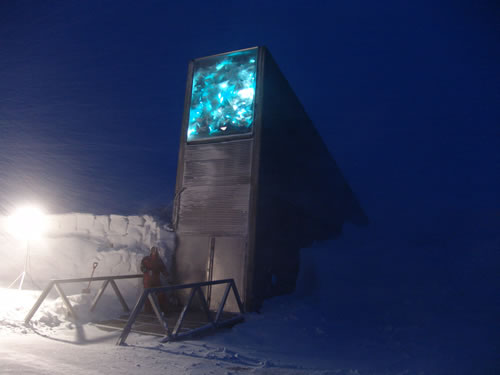We purchase open pollinated seed and that allows you to save the seed year after year. That is opposed to hybrid seed. You can save hybrid seed, but generally the plants will not be the same plant or produce the same fruit as the original plant. In my limited experience doing this, the yield will be diminished and the produce quality will be poor. I save some of my heirloom seeds in sealed containers in a dark, dry place in our house. I save some of my heirloom seeds in sealed containers in the freezer in the garage. I don't want to put all my eggs in one basket, so to speak.
It is a very real concern that I could lose all of my seed inventory due to natural disaster, spoilage, or some other tragedy. What would I do? I was reading about this and learned that for this very reason, Norway built a Seed Vault called the Svalbard Global Seed Vault to insure against the risk of losing seed. Just like animals, plants can go extinct for one reason or another. You can read about it Here. It is very interesting.
Norway built the seed vault for $9 million USD and it is located 390 feet inside a mountain on Spitsbergen Island. The seed is heat sealed is special packages and is stored at -0.4 Fahrenheit. Scientists estimate that some of the seed could remain good for thousands of years. There are thought to be 1.5 million distinct seed types in existence. There are currently over 20 million total seeds of 770,000 distinct seed samples stored in the vault, containing roughly 1/3 of the world's major food crops.
Here is the entrance into the seed vault:
 |
| Image Credit |
 |
| Image Credit |
Now, I need to get busy and do my annual seed inventory of my seed vault...

No comments:
Post a Comment